
Grand Canyon National Park vs Rocky Mountain National Park: Which Epic Adventure Destination Should You Choose in 2025?
Planning a trip to explore America’s stunning national parks? Grand Canyon and Rocky Mountain National Parks offer two completely different outdoor adventures. While both parks showcase nature’s majesty, they provide vastly different visitor experiences.
The Grand Canyon dazzles with its enormous scale and colorful rock layers, which the Colorado River carved over millions of years. Meanwhile, Rocky Mountain National Park impresses with its soaring peaks, alpine meadows, and diverse wildlife. The Grand Canyon spans 1,904 square miles of rugged terrain in Arizona, letting you escape crowds if you venture beyond popular viewpoints.
Rocky Mountain National Park, established in 1915 in Colorado, offers spectacular mountain scenery with over 300 miles of hiking trails. You might enter through the park’s west side and exit through the east, as many roadtrippers do when traveling between these iconic destinations. Both parks provide unforgettable outdoor adventures, though they showcase completely different natural wonders of America.
Contents
- Overview of Grand Canyon National Park
- Geological Significance
- Biodiversity and Ecosystems
- Popular Trails and Hiking Destinations
- Visitor Facilities and Amenities
- Overview of Rocky Mountain National Park
- Mountain Ranges and Peak Elevations
- Wildlife and Natural Habitats
- Trail System and Wilderness Access
- Recreational Activities Beyond Hiking
- Comparing Landscapes and Scenery
- Canyon Views versus Mountain Vistas
- Seasonal Weather Patterns
- The Experience of Solitude in Nature
- Hiking Experiences in Grand Canyon vs. Rocky Mountains
- Trail Difficulty Levels
- Unique Hiking Opportunities
- Safety Precautions and Considerations
- Wildlife Conservation and Education
- Species Protection Efforts
- Visitor Education Programs
- Volunteer Opportunities
- Visitor Impact and Sustainable Tourism
- Managing Foot Traffic and Erosion
- Eco-friendly Facilities and Services
- Promoting Responsible Outdoor Recreation
- Practical Information for Travelers
- Best Times to Visit
- Accommodation Options
- Navigating Park Regulations
- Cultural Significance and Historical Sites
- Indigenous Heritage
- Historic Landmarks and Structures
- Cultural Events and Festivals
- Photography Tips and Scenic Spots
- Capturing the Majesty of the Canyons
- Mountain Photography Techniques
- Best Times for Light and Shadows
- Frequently Asked Questions
- What are the key differences in geography and climate between Grand Canyon National Park and Rocky Mountain National Park?
- How do the wildlife and biodiversity compare between the two national parks?
- Which park offers better opportunities for hiking and outdoor activities?
- In terms of visitor experiences, how do accommodations and facilities differ at each park?
- Can you efficiently explore Grand Canyon National Park and Rocky Mountain National Park in one trip?
- What unique geological features can be observed in each park that distinguishes them?
- More Travel Guides
Overview of Grand Canyon National Park

The Grand Canyon is one of America’s most iconic natural wonders, spanning 1,904 square miles of breathtaking landscape. This massive canyon, carved by the Colorado River over millions of years, offers visitors a chance to experience unique geological formations, diverse ecosystems, and some of the most spectacular views on Earth.
Geological Significance

The Grand Canyon’s exposed rock layers reveal nearly two billion years of Earth’s geological history. The canyon is about 277 miles long, up to 18 miles wide, and reaches depths over a mile. Each colorful layer tells a different chapter of our planet’s development.
The powerful Colorado River continues to shape this natural wonder today, cutting deeper into the canyon floor. Visitors can observe distinct formations like the Vishnu Basement Rocks at the bottom (some of the oldest exposed rocks on Earth) and the younger Kaibab Limestone at the rim.
The canyon walls display a stunning palette of reds, oranges, and browns that change throughout the day as sunlight shifts. This living geology lesson attracts scientists and curious travelers alike who come to witness Earth’s dramatic history written in stone.
Biodiversity and Ecosystems
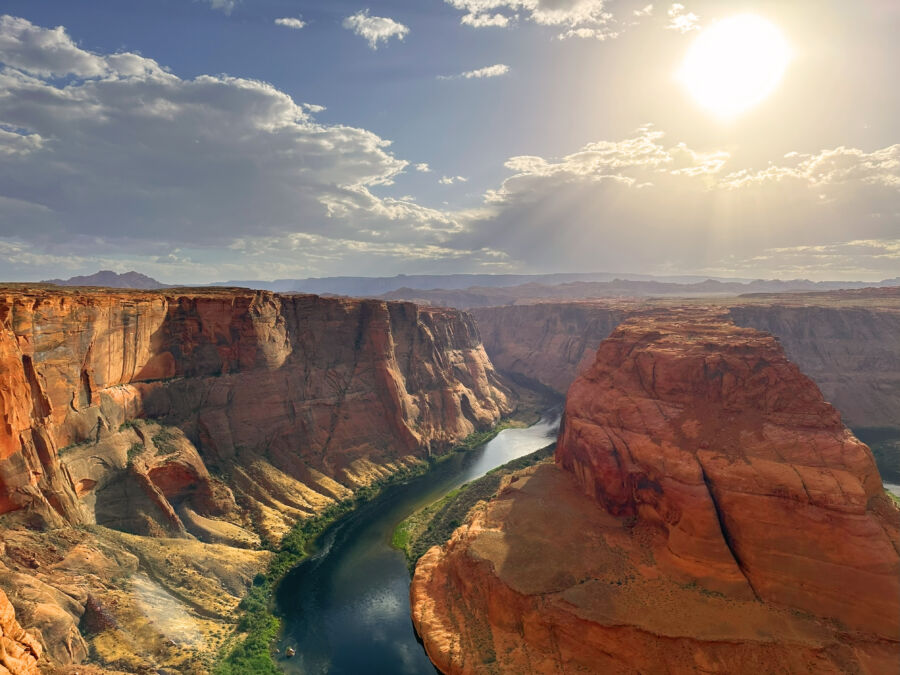
The Grand Canyon hosts remarkable biodiversity thanks to its dramatic elevation changes, creating several distinct life zones. From desert scrub at lower elevations to pine forests along the rims, these varied habitats support over 1,500 plant species, 355 bird species, and 89 mammal species.
Desert bighorn sheep navigate the steep canyon walls while California condors soar above. The riparian areas near the Colorado River harbor unique plant communities that contrast with the drier uplands.
The park’s ecosystems face challenges from climate change and invasive species. Rangers work to protect endangered species like the humpback chub fish, which is found only in the Colorado River basin.
Visitors might spot mule deer, elk, or even mountain lions during their stay. The canyon’s ecological diversity makes it not just a geological wonder but a biological treasure as well.
Popular Trails and Hiking Destinations

The Bright Angel Trail ranks among the park’s most famous routes. This well-maintained path descends from the South Rim, offering hikers spectacular views and rest houses. For those seeking adventure, the challenging Rim-to-Rim hike crosses the entire canyon.
South Kaibab Trail provides some of the most dramatic vistas but lacks shade and water. Experienced hikers love the panoramic views at Ooh Aah Point and Skeleton Point.
For less strenuous options, the Rim Trail offers paved sections ideal for all ability levels. With its striking blue-green waters, Havasu Falls attracts visitors willing to make the 10-mile trek to this desert oasis.
Most day hikers shouldn’t attempt to reach the river and back in one day. The park recommends planning carefully, carrying plenty of water, and understanding that hiking down is optional, but hiking back up is mandatory!
Visitor Facilities and Amenities

The South Rim, open year-round, hosts most visitor services, including the Grand Canyon Village, which has lodges, restaurants, and the main visitor center. Historic structures like El Tovar Hotel and Bright Angel Lodge offer accommodation options with canyon views.
The North Rim, accessible only from mid-May to mid-October due to heavy snow, provides a more remote experience with fewer crowds. The Grand Canyon Lodge offers the only accommodations on this side of the park.
Free shuttle buses connect major viewpoints and trailheads on the South Rim, reducing traffic congestion. Mule trips into the canyon remain a popular tradition for those who prefer not to hike.
Camping options include developed campgrounds like Mather Campground at the South Rim and primitive backcountry sites that require permits. Visitor centers feature educational exhibits, ranger programs, and helpful advice for making the most of your Grand Canyon adventure.
Overview of Rocky Mountain National Park

Rocky Mountain National Park spans 415 square miles of breathtaking mountain environments in Colorado. Established in 1915, this natural wonderland offers visitors a chance to experience the majesty of the Rockies, with over 60 mountains exceeding 12,000 feet in elevation.
Mountain Ranges and Peak Elevations

The park showcases the impressive Front Range of the Rocky Mountains. Longs Peak, at 14,259 feet, is the tallest in the park, drawing experienced climbers from around the world. About one-third of the park is above 11,000 feet, creating a dramatic alpine landscape unlike any other country.
Trail Ridge Road, often called the “Highway to the Sky,” takes visitors up to 12,183 feet – making it the highest continuous paved road in the United States. This road provides access to spectacular viewpoints across the Continental Divide.
The park’s mountain ranges formed millions of years ago through tectonic activity, creating the dramatic peaks and valleys visitors marvel at today. These ancient mountains continue to shape weather patterns and ecosystems throughout the region.
Wildlife and Natural Habitats

RMNP hosts incredible biodiversity across its varied elevations. Visitors commonly spot elk herds grazing in mountain meadows, especially during the fall rutting season when bulls bugle across the valleys. Moose frequent wetland areas, while bighorn sheep navigate rocky slopes with impressive agility.
The park contains five distinct ecosystems ranging from montane meadows to alpine tundra. Each zone supports unique plant and animal communities adapted to specific elevation conditions.
Over 280 bird species have been documented in the park, including the majestic golden eagle and the colorful mountain bluebird. At higher elevations, look for yellow-bellied marmots sunning themselves on rocks and tiny pikas gathering vegetation before winter.
Black bears and mountain lions also call the park home, though they’re more elusive. Wildflower enthusiasts will find over 1,000 plant species blooming throughout the summer months.
Trail System and Wilderness Access

The park offers over 355 hiking trails ranging from easy strolls to challenging backcountry routes. Popular hikes include:
- Bear Lake Loop: An easy 0.6-mile trail perfect for families
- Emerald Lake Trail: A moderate 3.5-mile round trip showcasing alpine lakes
- Longs Peak: A strenuous 16-mile journey to the park’s highest summit
RMNP contains about 260,000 acres of designated wilderness for those seeking solitude. Backpackers can obtain permits to camp in remote areas, experiencing the park’s natural beauty away from crowds.
Winter transforms the trail system into a wonderland for snowshoeing and cross-country skiing. Rangers offer guided snowshoe walks during winter, providing educational insights into how wildlife survives harsh mountain conditions.
Recreational Activities Beyond Hiking

RMNP offers adventures for every season and interest. Fishing enthusiasts can cast lines into over 50 lakes and numerous streams, with native cutthroat trout being a prized catch. Remember to check fishing regulations before your visit.
Rock climbing attracts thrill-seekers to numerous routes throughout the park. The iconic Diamond face on Longs Peak presents one of America’s most challenging big wall climbs.
Wildlife photography opportunities abound, especially during early morning and evening hours when animals are most active. The park’s dramatic landscapes provide perfect backdrops for capturing memorable images.
Horseback riding is permitted on certain trails, offering a traditional way to explore the backcountry. Several stables near park entrances provide guided rides for visitors of all experience levels. Winter visitors enjoy sledding at Hidden Valley, a former ski area within park boundaries.
Comparing Landscapes and Scenery
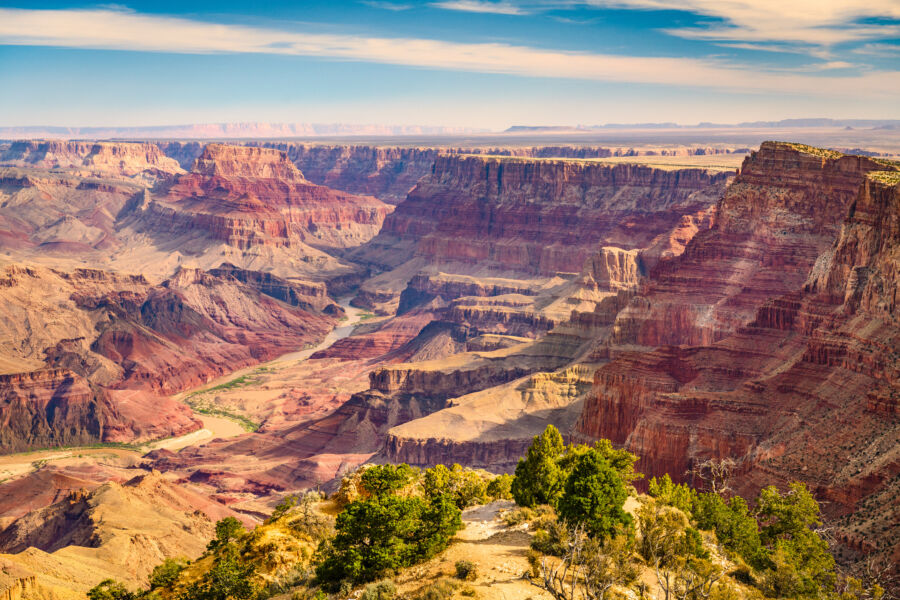
When exploring America’s great outdoors, the Grand Canyon and Rocky Mountain National Park landscapes offer dramatically different yet equally stunning experiences. Each park showcases nature’s artistic abilities through vastly different geological features and scenic elements.
Canyon Views versus Mountain Vistas
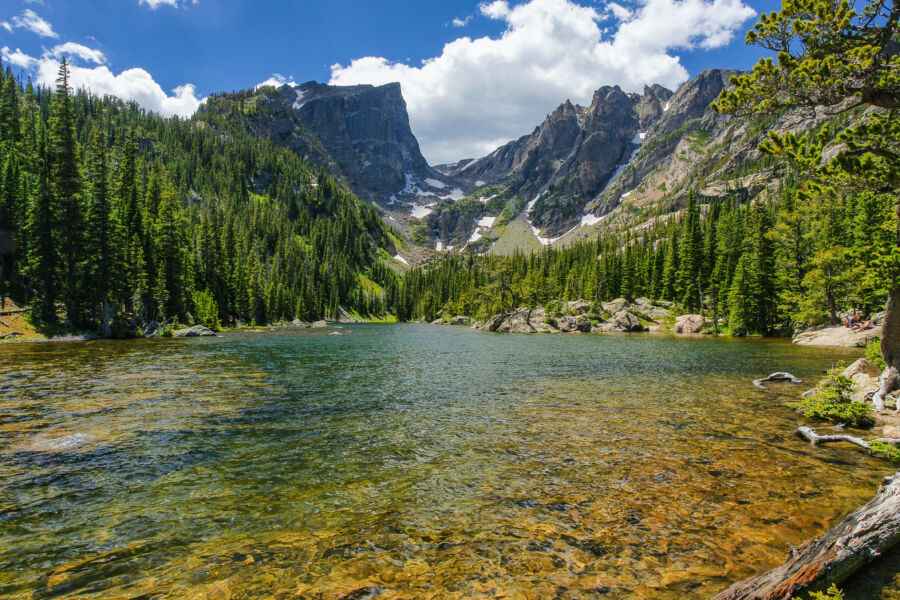
The Grand Canyon dazzles visitors with its sheer enormity. Standing at the rim, you’re greeted by a vast chasm that stretches up to 18 miles wide and plunges over a mile deep. The layered bands of red rock tell Earth’s story, going back nearly two billion years. Sunset and sunrise are magical moments when the canyon walls glow in vibrant oranges and reds.
Rocky Mountain National Park, by contrast, reaches for the sky rather than digging into the earth. With more than 60 peaks exceeding 12,000 feet, including the famous Longs Peak at 14,259 feet, visitors experience the majesty of looking up rather than down. Trail Ridge Road offers breathtaking panoramas as it winds above the treeline.
The canyon offers grand, sweeping vistas, while the Rockies provide intimate alpine scenes with meadows of wildflowers, crystal lakes, and dense forests.
Seasonal Weather Patterns

The Grand Canyon showcases distinct desert climate patterns. Summers bring scorching temperatures that can exceed 100°F at the bottom of the canyon, while rim temperatures stay more moderate. Winter brings occasional snow dusting the canyon rim, creating magical photo opportunities without closing most viewing areas.
Rocky Mountain National Park experiences dramatic seasonal transitions. Summer offers pleasant hiking weather with temperatures in the 70s and 80s. Fall transforms the landscape with golden aspen trees shimmering in the mountain breeze. Winter blankets the park in heavy snow, making it a paradise for cross-country skiing and snowshoeing.
Spring arrives late in the Rockies, often not until June at higher elevations when meadows burst with wildflowers after the snowmelt.
The Experience of Solitude in Nature

Finding solitude at the Grand Canyon requires strategy. The South Rim buzzes with tourists year-round, but hiking a short distance below the rim dramatically reduces crowds. The North Rim (open October) sees fewer visitors and offers peaceful viewpoints where you might stand alone with the vast canyon.
Rocky Mountain National Park offers more accessible solitude. With over 300 miles of hiking trails spread across varied terrain, it’s easier to escape the crowds. Early mornings at Bear Lake or exploring the quieter western side near Grand Lake provide tranquil experiences among stunning alpine scenery.
Both parks offer stargazing opportunities that humble visitors. The Grand Canyon’s clear desert skies reveal the Milky Way in stunning detail, while the Rockies’ high elevation creates perfect conditions for viewing the night sky away from city lights.
See Related: Best Winter Destinations in the US: Snowy Escapes You Can’t Miss
Hiking Experiences in Grand Canyon vs. Rocky Mountains

Both parks offer incredible hiking experiences but have vastly different terrain, climate conditions, and physical demands. The Grand Canyon’s trails descend into a massive canyon, while Rocky Mountain trails often climb upward toward alpine peaks.
Trail Difficulty Levels
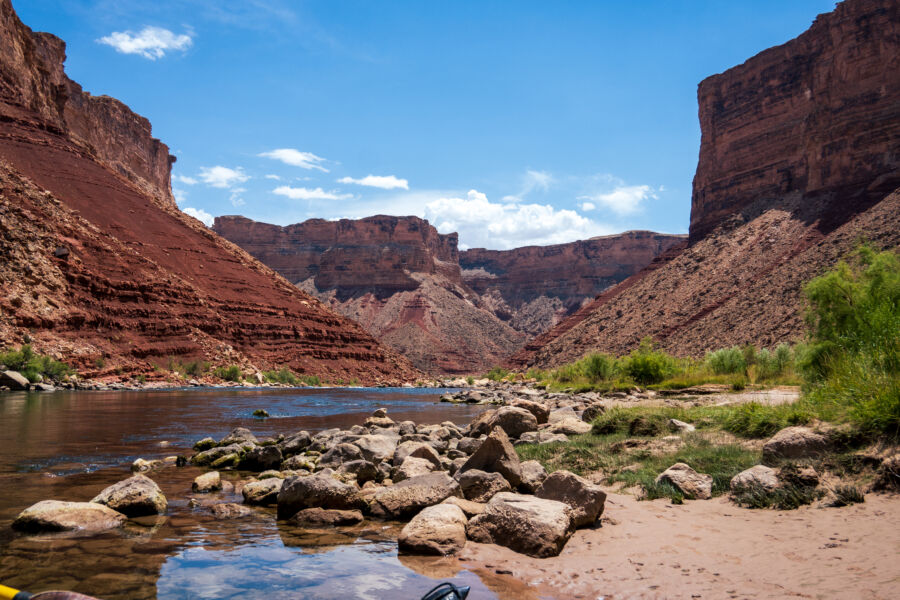
The Grand Canyon presents a unique hiking challenge – you hike down first, then up. This reverse elevation pattern catches many hikers off guard.
Most trails, like Bright Angel and South Kaibab, are steep and exposed to intense sun. The difficulty increases dramatically the further you descend.
Rocky Mountain National Park features more traditional mountain trails with varying difficulties. Easy trails like Bear Lake and Emerald Lake offer spectacular scenery with minimal elevation gain. More challenging hikes like Longs Peak demand serious mountaineering skills and physical fitness.
The Rocky Mountains typically offer more beginner-friendly options. Grand Canyon trails tend to be more physically demanding due to the combination of heat, lack of shade, and the psychological challenge of saving energy for the uphill return journey.
Unique Hiking Opportunities

The Grand Canyon offers a geological time machine experience. As you descend into the canyon, each layer reveals millions of years of Earth’s history. The Rim-to-Rim hike, spanning 21+ miles across the canyon, ranks among America’s most epic day hikes.
Multi-day backpacking trips to Havasu Falls reward hikers with stunning turquoise waterfalls in a desert oasis. The solitude of the inner canyon creates an other-worldly experience.
Rocky Mountain National Park shines with alpine adventures. Summer wildflower meadows burst with color below towering peaks. The Continental Divide Trail passes through, offering spectacular mountain views and wildlife spotting opportunities.
High-alpine lakes like Sky Pond require scrambling over rocks but deliver postcard-perfect scenery. Fall hiking brings golden aspen groves that create a magical atmosphere.
Safety Precautions and Considerations
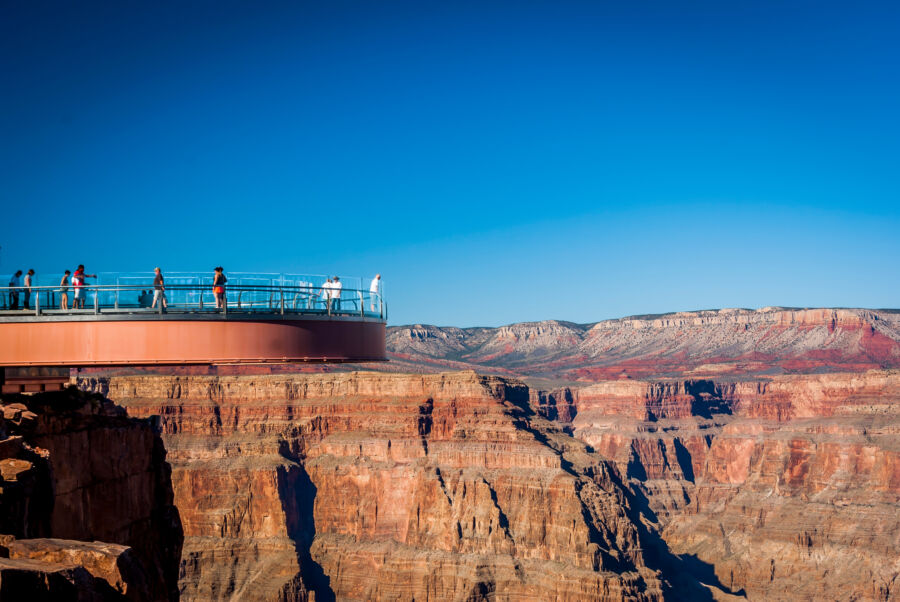
Grand Canyon hiking demands serious preparation. Summer temperatures can exceed 100°F at the bottom, while the rim might be 20 degrees cooler. Always carry abundant water – at least a gallon per person for day hikes.
Heat-related emergencies are common. Plan hikes for early morning and know when to turn back.
Cell service is limited or non-existent below the rim. In winter, ice on the upper portions of the trails requires traction devices.
Rocky Mountain hiking presents different dangers. Afternoon thunderstorms develop quickly above the tree line, creating lightning risks. Start early and plan to be descending by noon.
Altitude sickness affects many visitors unaccustomed to elevations over 10,000 feet. Proper acclimatization is crucial.
Wildlife encounters, particularly with elk and moose, require maintaining safe distances. Winter hiking demands avalanche awareness and proper equipment.
Wildlife Conservation and Education
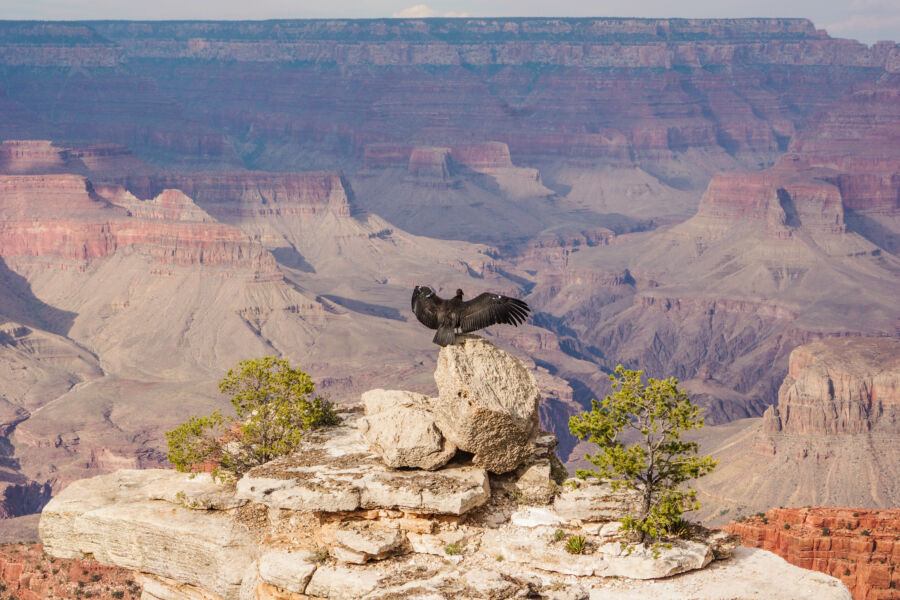
Grand Canyon and Rocky Mountain National Parks serve as vital habitats for diverse wildlife species while offering unique educational opportunities for visitors. These parks balance conservation efforts with public engagement through various programs designed to protect native species and educate the millions who visit each year.
Species Protection Efforts

Rocky Mountain National Park has implemented comprehensive programs to protect its delicate ecosystem. Park rangers closely monitor elk populations, which faced habitat loss and hunting challenges before conservation efforts began. The park also works to protect endangered species like the boreal toad and greenback cutthroat trout through habitat restoration projects.
Grand Canyon National Park focuses on protecting unique desert species. The California condor recovery program is one of their most successful conservation stories.
Once nearly extinct, these massive birds now soar above the canyon rims thanks to breeding and release programs. The park also protects desert bighorn sheep and numerous plant species found nowhere else.
Both parks face similar challenges with climate change impacts. Rising temperatures affect alpine species in Rocky Mountain National Park and desert wildlife in Grand Canyon National Park, requiring ongoing adaptation of conservation strategies.
Visitor Education Programs

Rocky Mountain National Park excels at transforming the outdoors into a classroom experience. The park offers Junior Ranger programs that engage children through interactive activities about wildlife and conservation. Ranger-led walks give visitors insights about animal habitats, plant life, and ecosystem management.
Grand Canyon features the impressive Grand Canyon Visitor Center, where guests learn about the park’s unique wildlife through exhibits and films. Their Desert View program highlights the relationship between native cultures and wildlife conservation over centuries.
Both parks use technology creatively in their education efforts. Mobile apps help visitors identify animal tracks and bird calls, while information boards along trails offer quick facts about nearby wildlife. These tools help visitors understand conservation challenges without intruding on the natural experience.
Volunteer Opportunities

The Rocky Mountain National Park volunteer programs allow visitors to participate directly in conservation. The Elk Bugle Corps helps manage visitor interactions with elk during rutting season. Habitat restoration weekends invite volunteers to help remove invasive plants and replant native species critical to wildlife survival.
Grand Canyon offers similar hands-on experiences through its Science and Resource Management volunteer program. Participants assist with wildlife surveys, trail maintenance, and visitor education. Their Vegetation Program specifically focuses on protecting plant species that provide food and shelter for canyon wildlife.
Both parks coordinate with universities for research opportunities. College students can participate in wildlife tracking, population studies, and habitat monitoring. These experiences benefit the parks and train the next generation of conservation professionals while giving visitors meaningful ways to contribute to park preservation.
Visitor Impact and Sustainable Tourism

Grand Canyon and Rocky Mountain National Park face challenges as their popularity grows. Millions of visitors each year create environmental pressures that require innovative management solutions to protect these natural treasures for future generations.
Managing Foot Traffic and Erosion

The Grand Canyon sees over 6 million visitors annually, significantly erasing popular viewpoints and trails. Park officials have implemented designated pathways and installed barriers at South Rim overlooks to prevent further damage. Some trails now require permits with strict daily visitor limits.
Rocky Mountain National Park faces similar challenges with its 4.4 million annual visitors. In 2020, the park introduced a timed entry reservation system that continues today. This system spreads visitor traffic throughout the day, reducing trail congestion and environmental impact.
Both parks have invested in trail reinforcement using sustainable materials. They’ve also created “resting periods” for heavily trafficked areas to allow natural vegetation regeneration and soil stabilization.
Eco-friendly Facilities and Services

The Grand Canyon has pioneered solar power installations at visitor centers and lodges. Water conservation systems capture rainwater for landscaping and non-potable uses, which is critical in the arid desert environment.
Rocky Mountain National Park uses electric shuttle buses to transport visitors during peak seasons. This reduces carbon emissions and traffic congestion on park roads. Their visitor centers feature energy-efficient designs with passive solar heating.
Both parks have implemented:
- Waste reduction programs with comprehensive recycling
- Water bottle refill stations to minimize plastic waste
- LED lighting throughout facilities
- Locally sourced food options in park restaurants
These initiatives have reduced the parks’ carbon footprints while setting examples for visitors to follow in their own lives.
Promoting Responsible Outdoor Recreation

The Grand Canyon’s “Leave No Trace” education program has become a model for other parks. Rangers discuss responsible hiking, proper waste disposal, and wildlife safety daily. The park also offers virtual reality experiences that allow visitors to “see” fragile areas without physically impacting them.
Rocky Mountain National Park created the “Rocky Mountain Stewardship Corps,” which engages visitors in volunteer conservation projects. The park’s junior ranger program specifically teaches children about ecosystem protection and environmental ethics.
Both parks use social media campaigns to show the real impacts of irresponsible behavior. They share before-and-after photos of damaged areas and stories of wildlife affected by visitor interactions.
Park websites now include “low-impact visit planners,” helping tourists choose less crowded trails and times. They’ve also partnered with outdoor retailers to promote eco-friendly gear and practices among park visitors.
Practical Information for Travelers
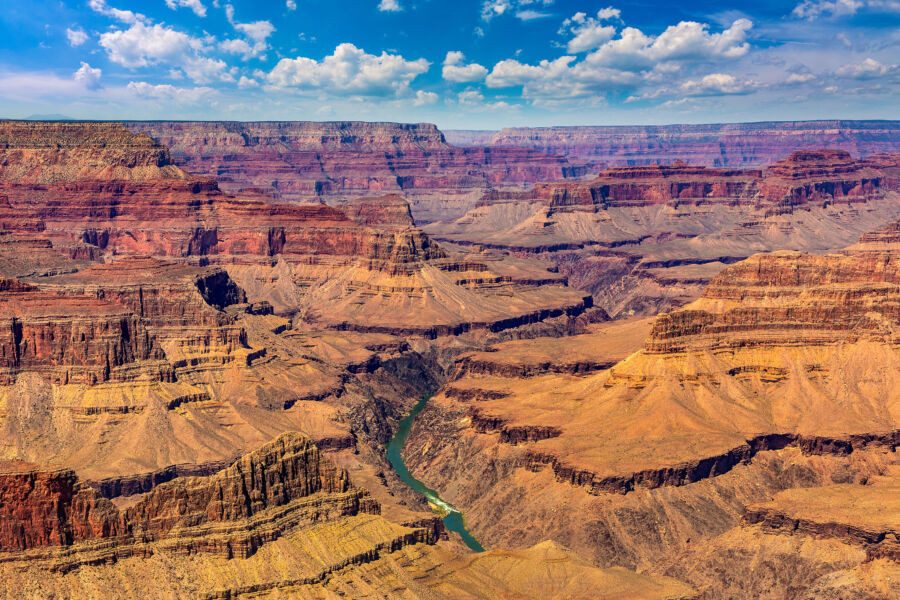
Planning your Grand Canyon or Rocky Mountain National Park visit requires key preparations to ensure a smooth experience. Both parks have specific seasons, lodging options, and regulations that can significantly impact your adventure.
Best Times to Visit

Grand Canyon offers year-round access, but spring (April-May) and fall (September-October) provide the most pleasant temperatures for hiking. Summer brings crowds and temperatures exceeding 100°F at the bottom of the canyon, while winter offers solitude but potential snow on the rims.
Rocky Mountain National Park shines from late June through September, when all roads are typically open. July and August bring wildflowers and active wildlife but also the largest crowds.
Fall delivers spectacular aspen colors, especially in mid-September. Winter transforms the park into a snowy wonderland perfect for snowshoeing and cross-country skiing.
Both parks experience afternoon thunderstorms in summer, so plan morning hikes for safety. Consider weekday visits during peak seasons to avoid the worst of the crowds.
Accommodation Options

Grand Canyon’s South Rim offers several in-park lodges, including the historic El Tovar Hotel and Bright Angel Lodge. Reservations should be made 6-12 months in advance through Booking.com. The North Rim has only one lodge open seasonally (mid-May to mid-October).
Camping options include the South Rim’s Mather, Desert View, and North Rim Campground. Tusayan, just outside the South Rim, provides additional hotel options.
Rocky Mountain National Park has no in-park lodges but offers five campgrounds. Moraine Park and Glacier Basin are the largest and most popular. The gateway towns of Estes Park (east) and Grand Lake (west) have numerous lodging options, from budget motels to luxury cabins, and can be found through Expedia.

Both parks require entrance fees. Grand Canyon charges $35 per vehicle for a 7-day pass.
Rocky Mountain National Park charges $30 daily or $35 weekly per vehicle. The America the Beautiful Pass ($80) covers both parks for a year.
Rocky Mountain implemented a timed entry reservation system to manage crowds. You’ll need a timed entry permit and your entrance fee from late May through October. These become available on a rolling monthly basis and often sell out quickly.
Pets have limited access to both parks. They are restricted to paved areas and not allowed on most trails. Leave No Trace principles apply throughout both parks. Pack out everything you bring in.
Altitude sickness can be an issue in Rocky Mountain, which sits above 7,500 feet and reaches over 12,000 feet at Trail Ridge Road. Acclimatize slowly and stay hydrated during your adventure.
Cultural Significance and Historical Sites
The Grand Canyon and Rocky Mountain National Park offer rich tapestries of human history and natural wonders. These parks preserve centuries of cultural heritage through ancient ruins, historic buildings, and ongoing traditions.
Indigenous Heritage

The Grand Canyon has been home to Indigenous peoples for thousands of years. The Havasupai, Hualapai, Navajo, Hopi, and Southern Paiute tribes have deep connections to this sacred landscape.
Visitors can explore ancient granaries and dwellings along the rim and within the canyon. The Desert View Watchtower showcases Hopi artwork and provides a glimpse into Indigenous perspectives on the canyon.
Rocky Mountain National Park has significant ties to the Ute and Arapaho tribes. These groups used the mountain valleys seasonally for hunting and gathering. Trail Ridge Road follows a path that Indigenous peoples traveled for generations.
The park’s Ute Trail preserves one of these ancient routes. Park rangers often lead programs highlighting Indigenous knowledge of plant use, wildlife patterns, and seasonal changes.
Historic Landmarks and Structures

Grand Canyon’s El Tovar Hotel is a crown jewel of national park architecture. Built-in 1905, this rustic lodge represents the golden age of railroad tourism.
Other notable structures include:
- Kolb Studio (1904) – Home of pioneering photographers
- Bright Angel Lodge (1935) – Designed by Mary Colter
- Phantom Ranch – The only lodging at the canyon bottom
Rocky Mountain National Park features historic ranches and homesteads from early settlers. Holzwarth Historic Site preserves a 1920s dude ranch, allowing visitors to return quickly.
The park’s Alpine Visitor Center is 11,796 feet high, making it the highest facility in the National Park System. While not in the park, the Stanley Hotel near Estes Park inspired Stephen King’s “The Shining.”
Cultural Events and Festivals

The Grand Canyon hosts several annual events celebrating its cultural heritage. The Star Party in June brings astronomers and visitors together to appreciate the dark skies.
Native American Heritage Days feature traditional crafts, music, and storytelling demonstrations. The Grand Canyon Music Festival brings classical and contemporary performances to this dramatic setting each September.
Rocky Mountain National Park offers seasonal programs highlighting mountain culture. Elk Fest in Estes Park celebrates the park’s famous elk rut with bugling contests, Native American music, and educational programs.
The park’s Junior Ranger program gives kids hands-on experience with both natural and cultural history. Summer cultural demonstrations often feature traditional skills like blacksmithing, quilting, and pioneer cooking methods that helped early settlers survive in this challenging environment.
See Related: Most Breathtaking Places to Visit in the World (Travel Guide)
Photography Tips and Scenic Spots

Both parks offer incredible photography opportunities but require different techniques and timing to capture their unique beauty. The right equipment, positioning, and time of day can transform an ordinary snapshot into a breathtaking image.
Capturing the Majesty of the Canyons
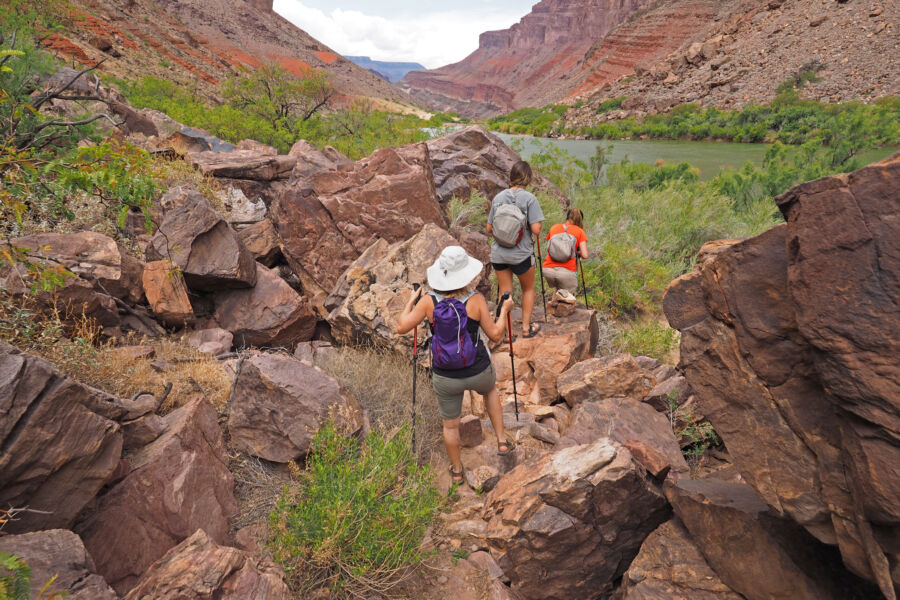
The Grand Canyon’s vastness makes it both a photographer’s dream and a challenge. For truly impressive shots, include a person in bright clothing to show the canyon’s immense scale. This simple trick helps viewers grasp just how massive this natural wonder is.
Early morning at Mather Point or Yavapai Observation Station provides dramatic lighting as the sun illuminates the canyon walls. The changing colors are magical!
For depth in your canyon photos, use a wide-angle lens (16-35mm) to capture the expansive views. But don’t forget to zoom in occasionally – the textures and layers of rock tell a fascinating geological story.
Desert View Watchtower offers unique elevated perspectives, especially during sunset when the canyon glows with warm orange and red hues. Tripods are essential here for sharp images in changing light.
Mountain Photography Techniques

Rocky Mountain National Park demands different approaches to photography than canyons. Telephoto lenses help capture distant peaks and wildlife here, while wide-angle lenses showcase sweeping alpine meadows.
Trail Ridge Road provides accessible high-altitude vantage points – perfect for dramatic mountain panoramas without strenuous hiking. The overlooks between Rainbow Curve and Forest Canyon are photographer favorites.
For stunning reflections, visit Bear Lake or Sprague Lake early in the morning when the water is the calmest. These mirror-like surfaces double the beauty of the surrounding peaks.
Try these mountain-specific techniques:
- Use polarizing filters to enhance blue skies and reduce glare
- Shoot with the sun at a low angle for textured shadows on peaks
- Include wildflowers or fall aspen trees as colorful foreground elements
Best Times for Light and Shadows

Outdoor photography depends on timing. “Golden hour” – the first and last hour of sunlight – brings the Grand Canyon to life. Meanwhile, the sunset at Hopi Point creates dramatic shadows stretching across the canyon.
Summer thunderstorms provide rare opportunities to capture lightning over the canyon. However, photographers should prioritize safety. Monsoon season (July-September) often brings dramatic skies and rainbows.
In Rocky Mountain National Park, alpenglow (the reddish glow on mountains at sunrise/sunset) creates magical moments at locations like Many Parks Curve. This effect is strongest in winter when snow reflects the light.
Fall brings spectacular color to the Rockies from mid-September to early October. The combination of golden aspens against snowy peaks is pure photography gold.
Both parks offer dark skies for night photography. The Grand Canyon’s South Rim stays open 24 hours, while Trail Ridge Road in Rocky Mountain provides high-elevation star shooting during summer.
See Related: Grand Canyon National Park vs Yosemite National Park: Stunning Differences Every Nature Lover Should Know
Frequently Asked Questions
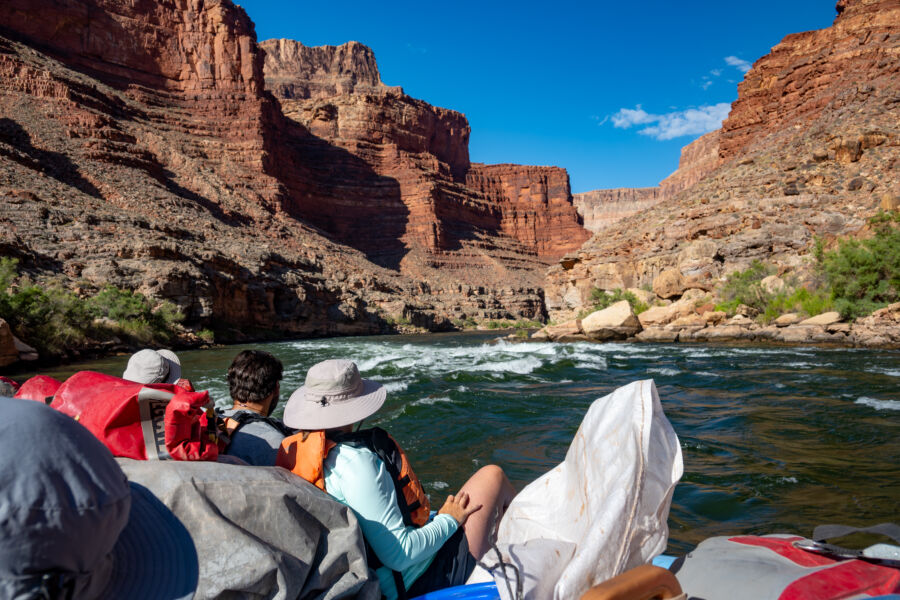
Grand Canyon National Park and Rocky Mountain National Park offer vastly different visitor experiences. These parks showcase some of America’s most spectacular landscapes but differ significantly in their environments, activities, and overall visitor experience.
What are the key differences in geography and climate between Grand Canyon National Park and Rocky Mountain National Park?
Grand Canyon National Park features a massive canyon carved by the Colorado River, stretching 277 miles long and 18 miles wide. The canyon depths reach over a mile, exposing colorful rock layers dating back billions of years.
Rocky Mountain National Park, by contrast, showcases towering mountain peaks with 78 mountains exceeding 12,000 feet in elevation. The Continental Divide runs through the park, creating dramatic alpine scenery.
Climate-wise, the Grand Canyon varies dramatically with elevation. The rim areas experience four distinct seasons, while the canyon bottom can be 20-30 degrees hotter in summer, often exceeding 100°F.
Rocky Mountain National Park has a typical mountain climate with cold, snowy winters and mild summers. Weather changes quickly at high elevations; afternoon thunderstorms are common in summer.
How do the wildlife and biodiversity compare between the two national parks?
Grand Canyon supports diverse ecosystems ranging from desert to forest environments. Visitors might spot California condors, bighorn sheep, elk, and numerous reptile species adapted to arid conditions. The park contains over 1,750 plant species thriving in multiple life zones from the canyon floor to the rim.
Rocky Mountain National Park is famous for its large elk herds, with the fall rutting season drawing many wildlife photographers. Other common sightings include moose, bighorn sheep, black bears, and marmots.
The park’s varied ecosystems support over 900 plant species, with beautiful alpine wildflower displays during the brief mountain summer. Wildlife viewing opportunities are generally more abundant in Rocky Mountain due to its diverse habitats.
Which park offers better opportunities for hiking and outdoor activities?
Grand Canyon offers challenging but rewarding hiking along maintained trails into the canyon. The Bright Angel and South Kaibab trails provide day hiking or backpacking opportunities. Remember that hiking up is always more strenuous than hiking down.
Rafting the Colorado River presents a unique multi-day adventure through the canyon’s heart. The South Rim stays open year-round, while the North Rim closes seasonally.
Rocky Mountain features over 350 miles of trails ranging from easy lakeside strolls to challenging mountain ascents. Trail Ridge Road offers spectacular driving views, reaching 12,183 feet in elevation.
The park excels for family-friendly hiking, fishing in mountain lakes, and wildlife viewing. Winter activities include snowshoeing and cross-country skiing. Rocky Mountain generally offers more varied and accessible outdoor activities.
In terms of visitor experiences, how do accommodations and facilities differ at each park?
Grand Canyon’s South Rim houses lodges, restaurants, and visitor centers. Historic buildings like El Tovar Hotel offer unique accommodations. The less-visited North Rim has limited facilities that are open seasonally.
Camping options include developed campgrounds and backcountry permits. The gateway town of Tusayan provides additional lodging and services just outside the park.
Rocky Mountain National Park does not have lodges within its boundaries. The towns of Estes Park (east) and Grand Lake (west) serve as major gateways with numerous accommodation options.
Five campgrounds within the park require reservations during peak season. Estes Park offers a charming downtown with shops, restaurants, and family attractions, making it more developed than Grand Canyon’s gateway communities.
Can you efficiently explore Grand Canyon National Park and Rocky Mountain National Park in one trip?
Visiting both parks in one trip presents challenges due to distance. They’re separated by about 600 miles, requiring at least 10 hours of driving between them.
A combined trip would work best with at least 10-14 days available. Flying between Denver and Phoenix/Las Vegas could save time but adds expense.
For an efficient itinerary, consider spending 3-4 days at each park with travel days in between. The optimal season would be late spring through early fall when Rocky Mountain roads are fully open. A better alternative might be to combine the Grand Canyon with other Southwest parks like Zion or Bryce or pair Rocky Mountain with nearby Colorado destinations.
What unique geological features can be observed in each park that distinguishes them?
Grand Canyon reveals an unparalleled cross-section of Earth’s geological history. The exposed rock layers represent nearly 2 billion years of geological processes, with the oldest rocks at the canyon bottom dating to the Precambrian era.
Visitors can observe the effects of erosion, uplift, and ancient sea deposits in the colorful rock strata. The canyon’s sweeping panoramas make evident the power of water to shape landscapes.
Rocky Mountain National Park showcases dramatic evidence of alpine glaciation. During recent ice ages, massive ice sheets carved U-shaped valleys, cirques, and sharp peaks.
Features like moraines, glacial lakes, and erratics (transported boulders) tell the story of ice movement. The park also displays mountain-building forces, with massive uplifted granite formations and metamorphic rocks created by intense heat and pressure.



